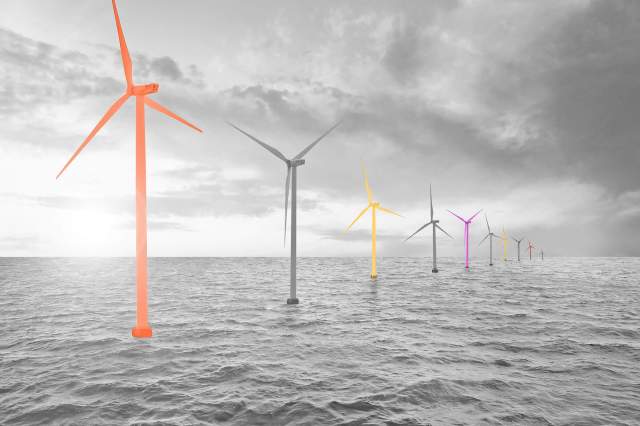
Wind Is Caused by Uneven Heating on the Earth
Ever wonder where the breeze on the beach comes from? It happens because during the day, the water warms up more slowly than the land next to it. This uneven heating causes changes in atmospheric pressure; warm air expands and rises, and the cool air from the water blows in to take its place. This is a smaller-scale example of how wind works throughout the world — on a grander scale, the difference in temperature between the equator and the North and South poles cause large, powerfully windy areas banding across the Earth.

Some Winds Reverse Course at Night
When wind rushes between water and land, the pattern is different depending on what time it is. During the day, the wind rushes inland — but at night, the land cools faster than the water, causing the wind to head back in the direction of the water. Pay attention to this phenomenon on your next long walk on the beach.

There Are Five Major Wind Zones on Earth
Prevailing winds, such as trade winds, blow in one direction without stopping. There are five major wind zones on the planet, each with their own behaviors of prevailing winds: polar easterlies, westerlies, horse latitudes, trade winds, and the doldrums.
Polar easterlies are winds that blow from the east around the North and South poles. Westerlies blow in the other directions at midlatitudes, around the middle points between the poles and the equator — strongest at around 40 to 50 degrees latitude in the Southern Hemisphere, blowing past New Zealand and the lower edges of Australia and South America. Horse latitudes, at about 30 degrees on either side of the equator, are warm areas with calm winds. Trade winds are incredibly predictable, powerful, easterly winds that run through the tropics, named because of how vital they’ve been to seafaring, including trading ships, throughout history.
The doldrums, also known as the intertropical convergence zone, is a calm area where two bands of trade winds meet. The winds here are weak, and ships have been known to get stuck there.
More Interesting Reads

Wind Energy Is Ancient Tech
Wind energy doesn’t just refer to turbine-generated wind power — it also refers to the sails of ships and the windmills that pump water or mill grain. Thousands of years ago, wind energy was propelling boats along the Nile River; ancient Egyptian art shows images of sailboats as early as 3300 BCE. Before that, sails made from animal hide still probably powered single-log rafts.

The First Windmills Were in Asia
Windmills may conjure images of rural European areas, but the earliest windmills were water pumps in ancient China and grain mills in ancient Persia around 200 BCE. Windmills were in heavy use in the Middle East in the 11th century CE, when traders brought the technology up north to Europe The iconic windmills in the Netherlands started cropping up around 1200 CE.

The Fastest Recorded Wind Was 253 MPH
In 1996, during Hurricane Olivia, an Australian wind meter recorded a wind speed of a whopping 253 miles per hour. Oddly, it was during a Category 4 storm, not the more severe Category 5, although with sustained 140-mile-per-hour winds, the weather wasn’t exactly calm. The meter, which was extremely heavy-duty, was determined to be working properly, and experts believe the measurement was caused by a powerful mesovortex, a violent swirl of wind, passing directly over it. It’s comparable odds to a tornado directly hitting a weather meter. The previous record-holder was a 231-mile-per-hour gust in New Hampshire. Notably, these records are only for land-based anemometers, not Doppler-estimates speeds from tornadoes or measurements taken by dropsondes, which drop from aircraft to gauge conditions inside storms.

Wind Carries Dust From the Sahara Desert All Over the World
The Sahara Desert is unfathomably massive, covering 3.3 million square miles in northern Africa — but its impact spreads even farther. Pushed by powerful trade winds, dust from the desert can hit halfway around the world in Texas and Florida (among other states), usually in the summertime. It arrives in quantities large enough to cause health problems, especially in people with asthma or other respiratory conditions.

Wind-Created Geographical Features Are Called Aeolian Landforms
The best-known landscape features caused by wind are dunes, mounds of sand that are critical to the ecosystems in coastal areas. But dunes are only one example of aeolian landforms (named for the Greek god of wind, Aeolus). Some are soft, like loess, collections of yellow or tan sediment usually deposited by wind, such as the notable loess deposits along the Missouri River in Iowa. Others are more dramatic, like ventifacts, which are rocks that are shaped by the wind and can form amazing shapes and structures.












